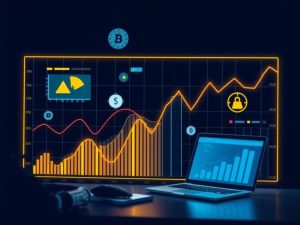Change to renewable energy and save money
The way we live our lives is changing. In every aspect of our day-to-day activities, we are able to harness the power of new technology and services to aid us. From the potential to use the web for learning and making global connections, to planning business transactions and logistics with a computer that fits in the palm of your hand, the twenty-first century is a time where we see society being reshaped by a technological revolution.
The accessibility that we all enjoy when it comes to new technology has afforded us all a greater sense of freedom than any generation before us. International travel is readily available, as is the ability to discover a wealth of information on any subject in an instant. The revolution in information technology has given everyone a greater sense of power and – to use the old adage – with great power comes great responsibility. The saying has never had a more literal application than when it is used in relation to the way we source our energy.
There is a great debate amongst the world’s political classes as to the most efficient, cost effective, and responsible methods of energy capture. It is widely agreed that no single fuel source satisfies all three of these pressing demands. There is, as in all things, a compromise to be made. Fossil fuels are readily available at the present time, and are seen as a relatively efficient means of generating power on a consumer scale. Conversely, renewable energy is seen as inefficient, and potentially more expensive; it is also infinitely sustainable, and far less damaging to the environment and ecosystems.
The paradox at the heart of the green energy debate is therefore one of expense: why should it be that the least damaging option is also the most costly? The solution to this problem is found in the way the large energy companies conduct their business.
The reality of the present day situation is not that renewable energy sources such as wind, hydro-electric, and solar energy are expensive; it is that fossil fuels are undervalued to a disproportionate level. There is a discrepancy in the current pricing of crude oil, natural gas, and shale gas reserves, that will be naturally corrected over time. Compare this with the advances being made in renewables in terms of efficiencies and the consumer will find that green energy sources are increasingly the more attractive option as the years go by.
But taking advantage of green energy is not a matter of playing the waiting game. It is entirely possible to run an affordable, eco-friendly household already. Indeed, many of the early adopters are discovering to their amazement, that green energy technology is a smart investment that actually earns you money, rather than merely creating savings. But how can this be?
Let’s look at the use of photovoltaic (PV) solar panels, which can be purchased, ready-made, and installed onto the outside of almost any building. With an array of solar panelling, the home-owner can capture energy from the sun’s rays, which is then used for all electricity around the home. The elegance of this system is that the solar array connects directly to the existing national grid supply, rather than replacing it outright, providing peace of mind in knowing that there will always be back-up energy.
Average appliances around the home will, in most circumstances, consume less energy than a solar array is able to produce, meaning that most solar-powered homes run on an energy surplus. This is where the connection to the national grid really starts to make sense. Using a bi-directional electricity meter, the solar system is able to feed excess energy back into the national grid, helping to power the nation. The national grid even pays for this generated surplus: first as discounts on existing energy bills, and eventually, with cash payments made directly to the household. Not only does this result in lower monthly outgoings that save you money, but within five to ten years, most solar systems have recouped enough money in surplus generation to have even covered the costs of the solar panels themselves.
The renewable energy model puts an emphasis on individuals’ freedom from on-going payments and never-ending contracts. They are a shrewd investment for home-owners, and are virtually guaranteed to cover their own costs in the medium-term. The future of energy production will put an ever-greater emphasis on self-sufficiency, with households creating power for themselves, and the disproportionately large consumers in industry paying for use of the surpluses. As with every new technology, the early adopters tend to reap the rewards in cost terms – opting for renewable energy helps you to lower your existing bills. Go green now!


